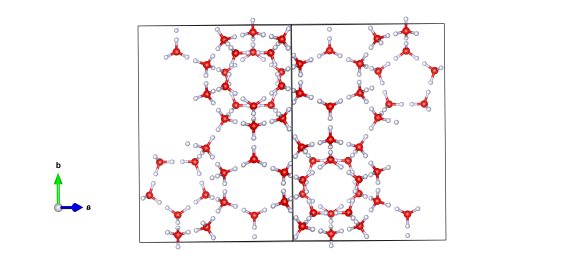A correction to an earlier claim – Ice XVI is the newest form of ice!
What does it look like?

The empty hydrate, ice VXI. Image generated by the VESTA (Visualisation for Electronic and STructural analysis) software http://jp-minerals.org/vesta/en/
What is it?
Last month, after a year of monthly ice structures, we profiled the latest discovered ice structure – ice XV. In a great example of the fact that science never stands still, last week a paper was published describing a new phase of ice – ice XVI.
This new form is a little different, in that we've kind of known about it for a while. We mentioned clathrate hydrates before on the blog. These are crystal structures that are made up of water cages with other small molecules, for instance methane, sitting inside them. But can these water cages exist on their own – without anything sitting inside?
That's what the investigators in this new study did: they formed the sII type of clathrate with neon, and then cooled it down to 4 K and put a vicious vacuum on it to suck out all the neon atoms! They were left behind with just the water cages, allowing them to declare that they had made a new form of ice!
Where did the structure come from?
The discovery of ice XVI was announced in the paper by Falenty et al. in the journal Nature last week. What's nice is that this news coincides with Nature making all of their papers free to view – so you can all read up on this if you like. The structure parameters we've plotted have come from a CIF they they supplied in their supplementary information.
The researchers used neutron diffraction, collected at the Institute Laue Langevin, and theoretical work to show that they had sucked out all the neon atoms, and that this was a new phase of ice.






